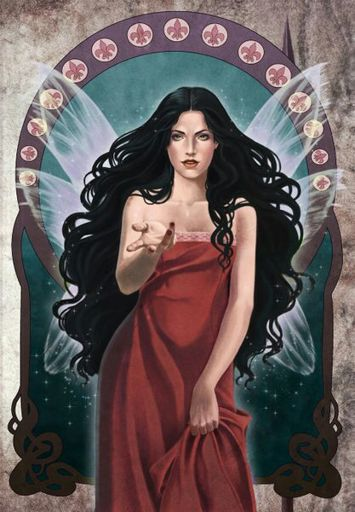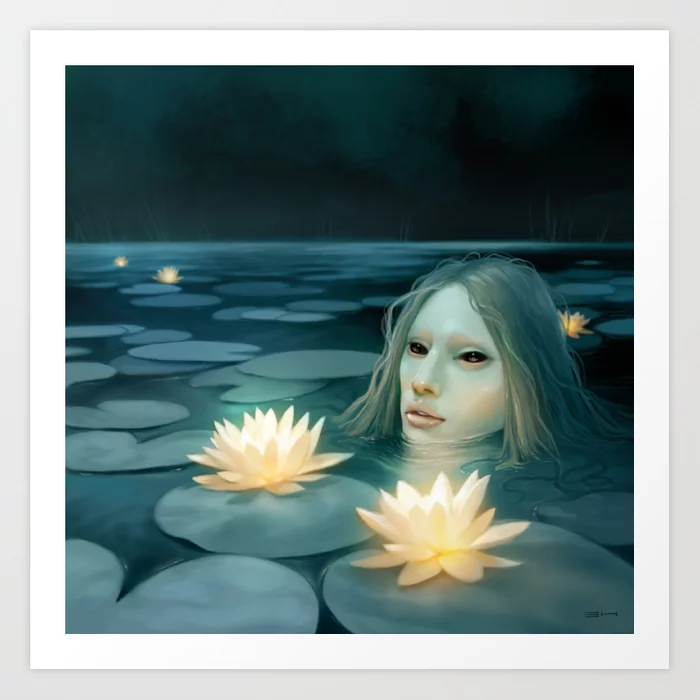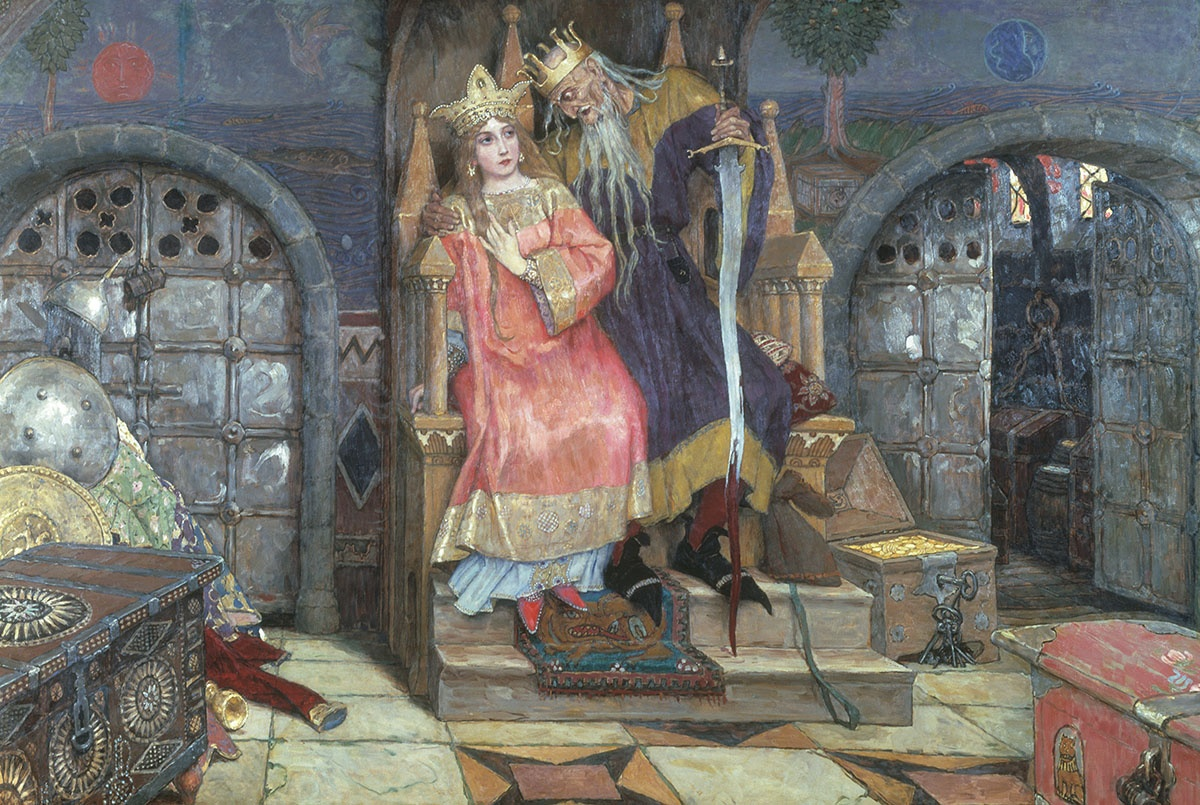By Shay Azman
In a pre-scientific era, humans were majorly defined by the imaginative way they filled their gaps of understanding ⎯ the justification of insanity and death were our main targets for mystical closure, as there is no discussion more uncomfortable than the concreteness of warped reality and it’s abrupt non-existence.
Back then, the madness of artists must be attributed to a beautiful creature with mesmerizing powers and the death of a newborn is accepted and further justified by saying they would grow up to become evil, as determined by a creature who supposedly sees the future and prevents it.
Below are some critters that the old world believed in. The humanlike traits of each of them might lead us to identify ourselves with them, which I personally find nothing short of exciting; how could one possibly associate themselves with baby-eating, sleep-paralysis-inducing creatures? Well, read on to find out more about the supernatural and of course, to take the quiz that will reveal the monster inside you.
Leannán sídhe
Irish Mythology

The Leannán sídhe is an irresistible and fatalistic ‘Irish fairy lover’ of the Aos Sí who seek human lovers, specifically artists. This creature of Irish mythology is portrayed as a divine muse who offers inspiration to these artists and enables them to create emotional works of art in exchange for their worship and affection. Most stories surrounding the Leannán sídhe reveal men to be her main target. Although, the affair will inevitably end in chaos, destruction, derangement and eventual death of the artist ⎯ as partners of the Leannán sídhe are preordained to live brief ⎯ these infatuated men are bound to live inspired lives due to the gifts bestowed by the Leannán sídhe. This particular creature considers a brief, artistic, and passionate life to be more genuine than a long life with untapped potential.
The lips of the Leannán sídhe is known to be as euphoric and addictive as any narcotic known to man. It is said that one had a hand in Van Gogh slicing off his ear. The Leannán sídhe, according to the mystical world, appeared as Rachel, a woman who posed several times for Van Gogh and Gauguin (Van Gogh’s friend, who was also an artist). Stories indicate that when Van Gogh and Gauguin lived together one night, Van Gogh presented a razor in Gauguin’s presence and threatened to kill him. Gauguin locked himself in his quarters, and Van Gogh used the razor to slice off his own ear. Later he presented his muse and mistress Rachel with the ear. She was horrified and he was briefly hospitalized.
The Leannán sídhe do not try to hide the power they have over men. They experience no guilt upon the death and destruction they cause, firmly believing that there are no faults in their doings. They are enthusiastic about art and choose artists or those with unmasked creative potentials, such as authors or composers as their victims. They claim to be able to sense hidden capabilities and talents in people, which is what attracts them to their victims. They normally target one victim at a time, and once their first victim ends up dead or insane after producing masterpieces, they move on to their next prey. The connection between the Leannán sídhe and her victim causes the victim to succumb to the part of obsessive devotee, willing to kill or die to be with her.
Naiad
Greek Mythology

Naiads are a kind of spirit, or nymph in Greek mythology, usually residing in forms of freshwater and often lingering over fountains, springs, and streams.
Naiads must live near a form of water as they bear a condition resulting in extremely rapid dehydration. A Naiad’s skin will dry out and peel, and they will perish if they do not enter water after two days.
Naiads are extremely protective and faithful to their families. They keep each other’s secrets, guard one another, and will always have each other’s backs. Several have even been willing to die of dehydration than give up one of their own. The story of Daphnis and Nomia prove to show that Naiads take loyalty solemnly. Daphnis was a shepherd in Sicily, and the Naiad Nomia fell for him. She was devoted to him, but Daphnis was regrettably infatuated with a princess, permitting her to seduce him at her mercy. When Nomia found out, she blinded Daphnis.
The females are said to be just as strong if not stronger males but are usually submissive due to the males’ aggressive tendencies.
History suggests that the Naiad community may have been one that was patriarchal, some Naiads appear to keep to the “old traditions.” These customs include cutting females when they break the law. In the act of cutting, the Naiad being prosecuted will have the telae between the toes and fingers slit, seemingly stripping that individual of their ability to swim at incredibly high speed.
Nowadays, Naiads could be a representation of women empowerment as their stories are retold in a more empowering manner. They are portrayed as loyal and strong women, revolting and refusing to tolerate their abusive males, while standing up for their sisters who are being mistreated.
El Cuegle
Spanish Folklore

A three-eyed, three-armed creature from Spain, El Cuegle sees the past, present and future with each of its eyes. With this great power comes great responsibility as El Cuegle is terrorized by sights of future destructive deeds. The only way to stop these incidents before they happen is to kidnap the perpetrator as a new-born and devour them.
They possess a truly unprecedented ability: with one eye they see the past, with another they see the present, and with the third, the future. Through this gift, they will receive foresight of a baby who has been recently born that will grow up to do something atrocious, usually mass murder or serial killing, should they be allowed to live. These visions cause El Cuegle terrible migraines which have the potential to kill them.
There is no joy in eating babies and El Cuegle feels just as daunted by their fate as any other would be in their position. Yet it seems to be the only alternative to end the vision migraines and potentially save countless innocent lives. The guilt of murdering a sinless infant and disbelief in how that infant could cause such mass chaos could tempt them into returning the baby they captured. This contemplative period is referred to as the “Hours of Dread.” This interval is no less than one day and no longer than two, all about dreading the inevitable. El Cuegle is aware that during the Hours of Dread, there is a possibility that the likelihood of the previously envisioned unfortunate outcome is not absolute and could, therefore, be somehow aborted. El Cuegle will not consume a baby until assured of “Abortar Mal Futuro” also known as “abort the bad future”, indicating the baby will undoubtedly grow up to do wicked crimes.
Alp
German Folklore

The Alp is a fascinating creature originating from German folklore. Known for being the cause of sleep paralysis and insomnia, they continue living only by robbing the sleep of others. This creature releases a paralysing gas on its victims while they lay asleep and proceeds to sit on their victims’ chest, weighing them down and essentially causing sleep paralysis. The Alp proceeds to attach its mouth onto their victim’s unmoving yet conscious head and feed on their sleep, leaving their victims exhausted and senseless. The ability to release such a powerful, numbing stench from its mouth causes it to have bad breath ⎯ so maybe a classmate around who always needs a mint is actually an Alp in disguise!
An Alp is not able to survive without absorbing the sleep of others and view their sleep feeding behaviour as a biological necessity. Surprisingly, they do not gain any sadistic joy when inducing harm to their victims. This creature prefers heavy sleepers because they produce more substance to be absorbed. They are attracted to areas where there are many victims to choose from (as they are looking for sustenance), which births the theory that they often reside near places like motels.
Alps have been described as an arrogant, cunning and clever creature, having the ability to fool their victims into believing the traumatic experience they cause, to be only a nightmare and nothing more.
Koschei
Russian Folklore

In Russian folklore, this supernatural being known as the Koschei often given the sobriquet “the Immortal” or “the Deathless” is commonly featured in tales orbiting around their ability to use a spell which prevents them from being killed. They nest their soul inside objects to protect it. For instance, they would store their soul inside a needle, which is in an egg, which is in a duck, which will fly off if anyone tries to seize it ⎯ yes, like a Russian doll horcrux. In certain versions of this story, it is said that they possess healing powers which makes them very difficult to kill.
Koschei has the ability to cure serious injuries and ailments almost instantaneously along with any pain associated with it. On the other hand, Koschei can also afflict people with agonising illnesses which will kill their victim within a few days. The use of both abilities, particularly the healing ability, strains their bodies and exhausts them the more they use it. If they use their healing ability too much, it will inevitably kill them.
As if it wasn’t already impossible to kill one, Koschei also possesses superhuman strength and heightened reflexes. This sanctions them to turn the tables on their attackers. A fun fact about the Koschei is that they have a very high libido and often use their eminence as healers to court women. They fancy drinking and commemorate the names of everyone they’ve killed, and they can feel very penitent after taking a life. They often use their gift of healing to atone for the lives they have taken.
So there you have it, a few supernatural resumes! Time to find out which one you are here: https://quiz.tryinteract.com/#/preview/5da5879ed0793c0014fe9df8



